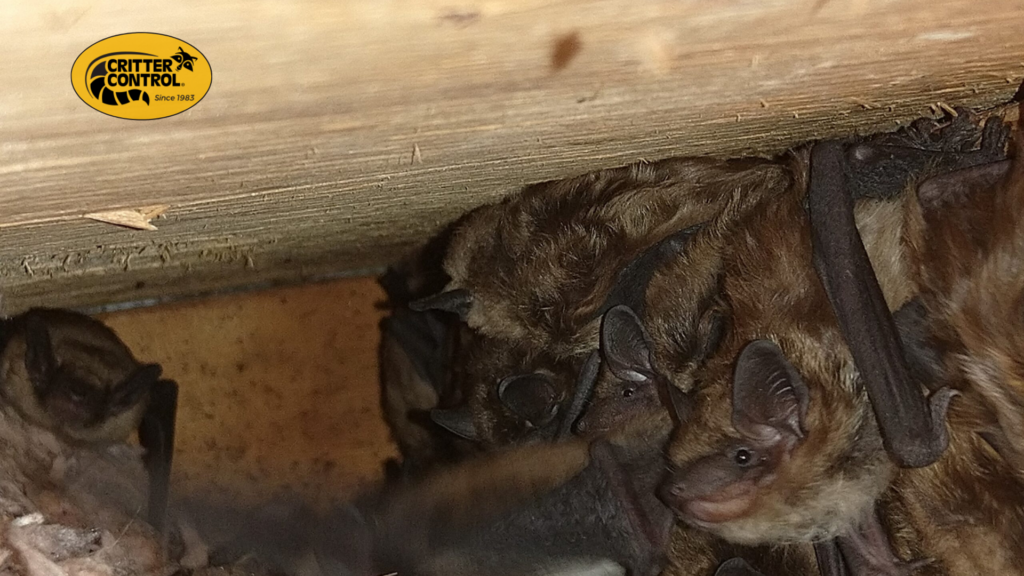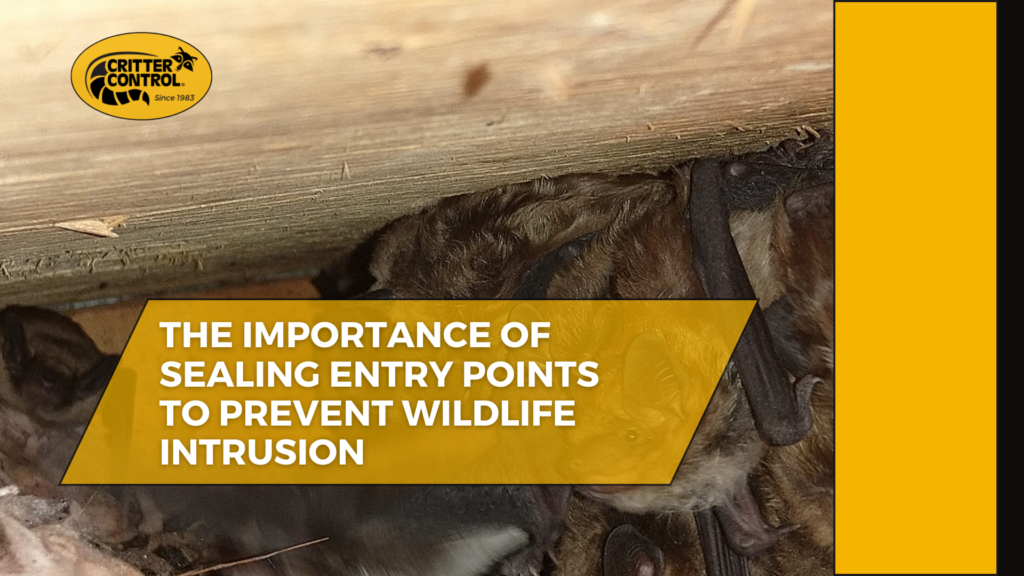Wildlife intrusions can cause significant damage to homes and pose health risks to residents. Whether it’s raccoons in the attic, squirrels in the walls, or rodents sneaking into the basement, these pests exploit even the smallest openings to gain entry. The most effective way to protect your home from unwanted animal invasions is to seal all potential entry points before they become a gateway for infestation.
In this article, we explore the importance of sealing entry points, common areas where wildlife enters, and the best prevention methods to keep your home safe from these persistent intruders.
Why Sealing Entry Points is Crucial for Wildlife Control

Wild animals are always searching for shelter, food, and a safe breeding ground. Homes provide ideal hiding places, especially during extreme weather conditions. However, once wildlife gains access, it can lead to:
1. Structural Damage
Animals like raccoons, squirrels, and rodents are notorious for chewing through materials such as wood, insulation, and electrical wiring. Over time, this damage can weaken your home’s foundation, increase fire risks, and result in costly repairs.
2. Health Risks and Disease Transmission
Wild animals carry diseases, parasites, and bacteria that can pose serious health risks to humans and pets. Droppings, urine, and nesting materials can contaminate air quality, leading to respiratory issues or infections. Common diseases associated with wildlife intrusion include:
- Hantavirus (spread by rodents)
- Rabies (transmitted by raccoons, bats, and skunks)
- Leptospirosis (found in rodent urine)
3. Increased Risk of Infestation
Once an entry point is established, more animals will follow. Rodents reproduce quickly, and if left unchecked, a minor issue can escalate into a full-blown infestation in just a few weeks.
4. Costly Removal and Repairs
The longer wildlife stays in your home, the more damage they cause. Professional wildlife removal can be expensive, and repairing chewed wires, insulation, or damaged roofing adds to the overall cost. Preventative sealing is far cheaper than dealing with an infestation.
Common Entry Points for Wildlife Intrusion
To effectively prevent wildlife from invading your home, it’s important to identify and secure the most vulnerable areas. Here are the most common entry points that animals exploit:
1. Gaps and Cracks in Foundations
Even the smallest cracks in a home’s foundation can serve as an entryway for rodents. Mice can squeeze through gaps as small as ¼ inch, making foundation repairs essential.
2. Roof Vents and Chimneys
Squirrels, raccoons, and birds frequently enter homes through open chimneys and damaged roof vents. Installing chimney caps and reinforced vent covers can prevent these animals from nesting in your attic.
3. Attic Openings and Soffits
Loose soffits, damaged fascia boards, and gaps in attic spaces allow raccoons, squirrels, and bats to gain entry. Regularly inspecting and sealing these areas can help keep wildlife out.
4. Gaps Around Windows and Doors
Rodents often sneak into homes through gaps in door frames or improperly sealed windows. Installing weather stripping and repairing broken seals can deter them.
5. Basement and Crawl Space Openings
Unsecured crawl spaces are prime targets for skunks, opossums, and rodents looking for shelter. Covering vents with sturdy metal mesh can prevent unwanted guests from settling under your home.
6. Utility Openings and Pipe Gaps
Holes around plumbing and HVAC units provide an easy way for wildlife to enter. Sealing these gaps with steel wool and expanding foam creates a strong barrier against rodents.
Best Methods to Seal Entry Points and Prevent Wildlife Intrusion
Properly sealing your home requires effective materials and techniques to ensure long-term protection. Here are the best ways to block wildlife access:
1. Use Steel Wool and Caulk for Small Gaps
Rodents can gnaw through plastic, wood, and even soft metal, but steel wool combined with caulk creates a durable barrier that prevents entry.
2. Install Chimney Caps and Vent Covers
Heavy-duty mesh covers on vents and a secure chimney cap can prevent birds, squirrels, and raccoons from entering your home.
3. Reinforce Soffits and Fascia Boards
Regularly inspect and repair any damage to soffits and fascia boards to prevent animals from prying their way into attic spaces.
4. Secure Crawl Spaces and Basements
Seal all entry points leading into crawl spaces with concrete patching, hardware cloth, or galvanized steel mesh to block wildlife intrusion.
5. Install Door Sweeps and Weather Stripping
Use high-quality door sweeps to close gaps under doors and apply weather stripping to windows and entryways to deter rodents.
6. Trim Overhanging Trees
Squirrels and raccoons use tree branches to access roofs. Trimming trees at least 6 feet away from your home prevents them from reaching entry points.
7. Keep Trash Bins Secure
Wildlife is often attracted to food sources. Secure garbage bins with locking lids and avoid leaving pet food outside to reduce attraction.
When to Call a Professional for Wildlife Prevention
Sealing entry points is highly effective, but some wildlife problems require professional intervention. Consider calling a wildlife control expert if:
- You hear persistent noises in the attic or walls.
- You notice large holes or chewed wiring.
- You find droppings, nesting materials, or a strong odor.
- You have an ongoing infestation despite DIY prevention efforts.
Professional wildlife control specialists have the tools and expertise to remove animals safely and provide long-term exclusion solutions.
FAQs About Sealing Entry Points for Wildlife Prevention
1. How often should I inspect my home for potential entry points?
It’s recommended to inspect your home at least twice a year, preferably before winter and spring when wildlife activity increases.
2. Can rodents chew through sealant materials?
Rodents can chew through many materials, but using steel wool, metal mesh, or concrete patches makes it much harder for them to gain entry.
3. What should I do if wildlife has already entered my home?
If animals are already inside, avoid sealing them in. Instead, contact a wildlife removal expert to safely evict them before sealing the entry point.
4. Is DIY sealing effective, or should I hire a professional?
DIY sealing can be effective for minor gaps, but professional services are recommended for large entry points or homes with recurring wildlife issues.
5. What is the best material to use for sealing large openings?
For large openings, galvanized steel mesh, hardware cloth, or heavy-duty metal sheeting are the best options to prevent animal intrusion.
Sealing entry points is one of the most effective wildlife prevention methods available. By securing vulnerable areas, homeowners can avoid costly damage, health risks, and future infestations. Regular inspections, durable materials, and professional intervention when necessary can ensure that your home remains safe and wildlife-free.




